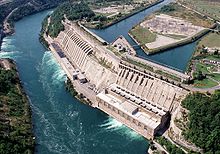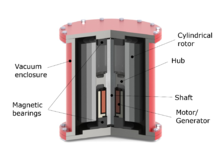WAPDA HOUSE
The WAPDA House (Urdu/Punjabi: واپڈا ہاؤس) is a nine-story office building located in Lahore, Pakistan, that serves as the headquarters of the Water and Power Development Authority (WAPDA). It is one of several prominent government buildings located at Charing Cross on Lahore's Mall Road.[2] The building shares views of the Punjab Provincial Assembly, Islamic Summit Minar, Masonic Lodge, and other key landmarks.[3][4]
It was designed by the American architect Edward Durell Stone, and completed in 1967.[1]

METHODS TO PRODUCE ELECTRICITY
Outline[edit]
The following list includes a variety of types of energy storage:
- Fossil fuel storage
- Mechanical
- Compressed air energy storage (CAES)
- Fireless locomotive
- Flywheel energy storage
- Gravitational potential energy
- Hydraulic accumulator
- Pumped-storage hydroelectricity (pumped hydroelectric storage, PHS, or pumped storage hydropower, PSH)
- Electrical, electromagnetic
- Capacitor
- Supercapacitor
- Superconducting magnetic energy storage (SMES, also superconducting storage coil)
- Biological
- Electrochemical (Battery Energy Storage System, BESS)
- Thermal
- Chemical
Mechanical storage[edit]
Energy can be stored in water pumped to a higher elevation using pumped storage methods or by moving solid matter to higher locations (gravity batteries). Other commercial mechanical methods include compressing air and flywheels that convert electric energy into kinetic energy and then back again when electrical demand peaks.
Hydroelectricity[edit]
Hydroelectric dams with reservoirs can be operated to provide electricity at times of peak demand. Water is stored in the reservoir during periods of low demand and released when demand is high. The net effect is similar to pumped storage, but without the pumping loss.
While a hydroelectric dam does not directly store energy from other generating units, it behaves equivalently by lowering output in periods of excess electricity from other sources. In this mode, dams are one of the most efficient forms of energy storage, because only the timing of its generation changes. Hydroelectric turbines have a start-up time on the order of a few minutes.[1]
Pumped-storage[edit]
Worldwide, pumped-storage hydroelectricity (PSH) is the largest-capacity form of active grid energy storage available, and, as of March 2012, the Electric Power Research Institute (EPRI) reports that PSH accounts for more than 99% of bulk storage capacity worldwide, representing around 127,000 MW.[2] PSH energy efficiency varies in practice between 70% and 80%,[2][3][4][5] with claims of up to 87%.[6]
At times of low electrical demand, excess generation capacity is used to pump water from a lower source into a higher reservoir. When demand grows, water is released back into a lower reservoir (or waterway or body of water) through a turbine, generating electricity. Reversible turbine-generator assemblies act as both a pump and turbine (usually a Francis turbine design). Nearly all facilities use the height difference between two water bodies. Pure pumped-storage plants shift the water between reservoirs, while the "pump-back" approach is a combination of pumped storage and conventional hydroelectric plants that use natural stream-flow.
Compressed air[edit]
Compressed air energy storage (CAES) uses surplus energy to compress air for subsequent electricity generation.[7] Small scale systems have long been used in such applications as propulsion of mine locomotives. The compressed air is stored in an underground reservoir, as a salt dome.
Compressed-air energy storage (CAES) plants can bridge the gap between production volatility and load. CAES storage addresses the energy needs of consumers by effectively providing readily available energy to meet demand. Renewable energy sources like wind and solar energy have variable resources. As a result, the supplement of other forms of energy is necessary to meet energy demand during periods of decreased resource availability. Compressed-air energy storage plants are capable of taking in the surplus energy output of renewable energy sources during times of energy over-production. This stored energy can be used at a later time when demand for electricity increases or energy resource availability decreases.[8]
Compression of air creates heat; the air is warmer after compression. Expansion requires heat. If no extra heat is added, the air will be much colder after expansion. If the heat generated during compression can be stored and used during expansion, efficiency improves considerably.[9] A CAES system can deal with the heat in three ways. Air storage can be adiabatic, diabatic, or isothermal. Another approach uses compressed air to power vehicles.[10][11]
Flywheel energy storage[edit]
Flywheel energy storage (FES) works by accelerating a rotor (flywheel) to a very high speed, holding energy as rotational energy. When energy is extracted, the flywheel's rotational speed declines as a consequence of conservation of energy; adding energy correspondingly results in an increase in the speed of the flywheel.
Most FES systems use electricity to accelerate and decelerate the flywheel, but devices that directly use mechanical energy are under consideration.[12]
FES systems have rotors made of high strength carbon-fiber composites, suspended by magnetic bearings and spinning at speeds from 20,000 to over 50,000 rpm in a vacuum enclosure.[13] Such flywheels can reach maximum speed ("charge") in a matter of minutes. The flywheel system is connected to a combination electric motor/generator.
FES systems have relatively long lifetimes (lasting decades with little or no maintenance;[13] full-cycle lifetimes quoted for flywheels range from in excess of 105, up to 107, cycles of use),[14] high specific energy (100–130 W·h/kg, or 360–500 kJ/kg)[14][15] and power density.
Gravitational potential energy storage with solid masses[edit]
Changing the altitude of solid masses can store or release energy via an elevating system driven by an electric motor/generator. Potential energy storage or gravity energy storage was under active development in 2013 in association with the California Independent System Operator.[16][17][18] It examined the movement of earth-filled hopper rail cars driven by electric locomotives from lower to higher elevations.[19]
Methods include using rails[19][20] and cranes[21] to move concrete weights up and down, using high-altitude solar-powered buoyant platforms supporting winches to raise and lower solid masses,[22] using winches supported by an ocean barge for taking advantage of a 4 km (13,000 ft) elevation difference between the surface and the seabed.[23] Efficiencies can be as high as 85% recovery of stored energy.[21]
Thermal storage
Thermal energy storage (TES) is the temporary storage or removal of heat.
Sensible heat thermal energy storage[edit]
Sensible heat storage take advantage of sensible heat in a material to store energy.[24]
Seasonal thermal energy storage (STES) allows heat or cold to be used months after it was collected from waste energy or natural sources. The material can be stored in contained aquifers, clusters of boreholes in geological substrates such as sand or crystalline bedrock, in lined pits filled with gravel and water, or water-filled mines. Seasonal thermal energy storage (STES) projects often have paybacks in the four-to-six year range.[25] An example is Drake Landing Solar Community in Canada, for which 97% of the year-round heat is provided by solar-thermal collectors on the garage roofs, with a borehole thermal energy store (BTES) being the enabling technology.[26][27][28] In Braestrup, Denmark, the community's solar district heating system also utilizes STES, at a storage temperature of 65 °C (149 °F). A heat pump, which is run only when there is surplus wind power available on the national grid, is used to raise the temperature to 80 °C (176 °F) for distribution. When surplus wind generated electricity is not available, a gas-fired boiler is used. Twenty percent of Braestrup's heat is solar.[29]
Latent heat thermal energy storage (LHTES)[edit]
Latent heat thermal energy storage systems works with materials with high latent heat (heat of fusion) capacity, known as phase change materials (PCMs). The main advantage of these materials is that their latent heat storage capacity is much more than sensible heat. In a specific temperature range, phase changes from solid to liquid absorbs a large amount of thermal energy for later use.
Latent-heat thermal energy storage consists of a process by which, energy in the form of heat, is either absorbed or released during the phase-change of a phase change material (PCM). A PCM is a material with a high heat of fusion. A phase-change is the melting or solidifying of a material. During a phase change, a PCM has the capacity to absorb large amounts of energy due to its high heat of fusion.[30]












0 comments:
Post a Comment